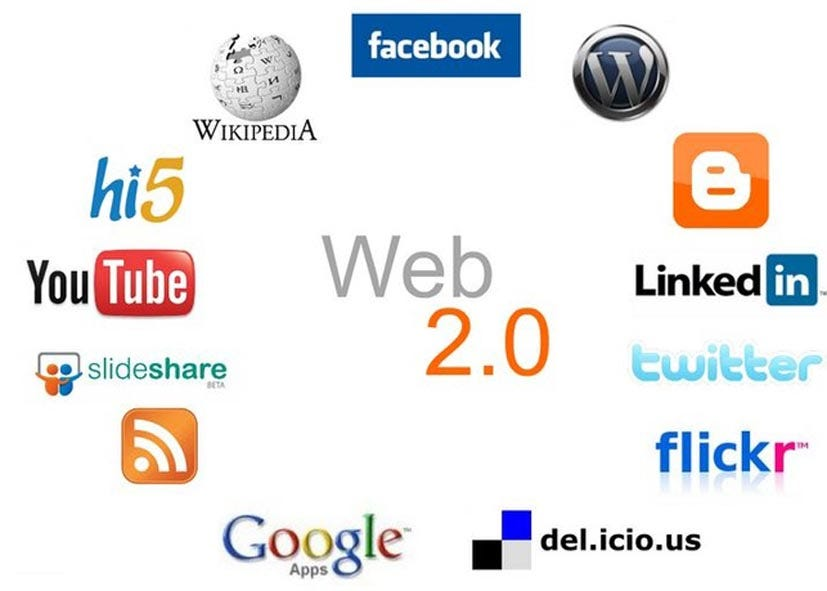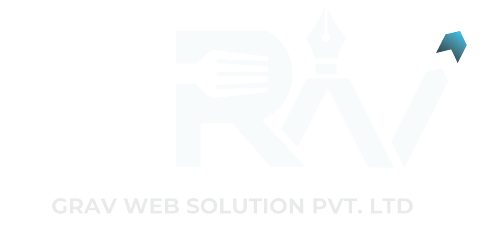Web 2.0 vs. Web 3.0: Unraveling the Next Evolution of the Internet
Introduction:
The internet has evolved dramatically since its inception. Web 2.0 and Web 3.0 represent significant milestones in this evolution, each revolutionizing the way we interact with digital marketing in the digital world. In this article, we’ll explore the key differences between Web 2.0 and the emerging Web 3.0, shedding light on the next phase of the internet’s development.
Web 2.0: The Age of User Interaction
Web 2.0 emerged around the early 2000s, marking a shift from static web pages to
dynamic, interactive platforms.
Here are the defining characteristics of Web 2.0
● User-Generated Content: Web 2.0 platforms empowered users to generate and share content. Blogs, social media, and video-sharing sites became prevalent, allowing individuals to contribute to the digital conversation.
● Social Networking: Social media platforms like Facebook, Twitter, and LinkedIn gained prominence, connecting people worldwide and facilitating real-time communication.
● Collaborative Tools: Tools like Google Docs, Wikipedia, and collaborative platforms revolutionized how people work together on documents and projects in real time.
● Rich Internet Applications (RIAs): Web 2.0 introduced applications with enhanced interactivity, such as Gmail, Google Maps, and YouTube, providing a more dynamic user experience.
● Semantic Web: The concept of a semantic web, where data is structured and
linked in a way that machines can understand, began to emerge.

Web 3.0:
The Semantic Web and Beyond Web 3.0, often referred to as the Semantic Web,
represents the next phase in the internet’s evolution. It’s still in its early stages, but its
potential impact is significant.
Here are the distinguishing features of Web 3.0:
● Semantic Technologies: Web 3.0 aims to create a web of interconnected data, allowing machines to understand and interpret information. This facilitates more intelligent searches and personalized experiences
● Artificial Intelligence (AI) and Machine Learning: AI-driven technologies are central to Web 3.0. They enable algorithms to understand user behavior, preferences, and intent, providing highly tailored content and services.
● Decentralization and Blockchain: Web 3.0 seeks to move away from centralized control. Blockchain technology, known for its transparency and security, plays a crucial role in this shift
● Internet of Things (IoT): Web 3.0 will seamlessly integrate with IoT devices, creating an interconnected network where devices can communicate and collaborate autonomously.
● Enhanced Virtual and Augmented Reality (VR/AR): Web 3.0 envisions a more immersive online experience, with VR and AR technologies enabling users to interact with digital environments in a lifelike manner.

The Semantic Web and Beyond Web 3.0, often referred to as the Semantic Web,
represents the next phase in the internet’s evolution. It’s still in its early stages, but its
potential impact is significant
Here's how you can leverage both
Using Web 2.0:
1. Content Creation and Sharing:
● Blogging: Create a blog to share expertise, opinions, or promote your business.
● Social Media: Engage with your audience on platforms like Facebook, Twitter, Instagram, and LinkedIn.
● Video Content: Utilize platforms like YouTube or TikTok for video content
2. User Interaction and Engagemen
● Respond to comments and messages promptly to foster a sense of community.
● Encourage user-generated content (UGC) by running contests, challenges, or asking for feedback
3. Collaboration and Networking
● Use collaborative tools like Google Docs, Dropbox, or project management platforms for team projects.
● Join professional networks like LinkedIn to network and collaborate with industry peers.
4. Feedback and Customer Service
● Use social media and review platforms to gather feedback and address customer concerns.
● Provide excellent customer service to build trust and loyalty.
5. Rich Media and Multimedia Content
● Incorporate images, videos, infographics, and interactive elements into your content for a more engaging user experience.
Using Web 3.0:
1. Semantic Web and AI:
● Implement schema markup on your website to provide structured data that search engines can understand.
● Explore AI-driven tools for personalized recommendations, chatbots for customer support, and content optimization.
2. Blockchain and Decentralization:
● Explore blockchain applications for secure transactions, smart contracts, and decentralized applications (DApps).
● Consider using blockchain for supply chain transparency or digital identity verification
3. Internet of Things (IoT):
● If applicable, integrate IoT devices into your operations for data collection, automation, and improved customer experiences
4. Virtual and Augmented Reality (VR/AR):
● If relevant to your industry, consider incorporating VR/AR experiences for product demonstrations, virtual tours, or immersive marketing campaigns
5. Data Privacy and Security:
● Emphasize data privacy and security measures to protect user information, especially with the increased focus on decentralized platforms.
7. Personalization and Customization
● Leverage AI and machine learning to provide highly tailored experiences, from product recommendations to content delivery. Remember, the extent to which you can use Web 3.0 technologies will depend on your industry and specific business goals. It’s important to stay updated on emerging technologies and consider how they can be applied to enhance your online presence and operations
Importance of Web 2.0 in Digital Marketing:
1. User Engagement and Interaction:
Web 2.0 platforms, including social media, blogs, and forums, provide opportunities for businesses to engage directly with their audience. This fosters a sense of community and builds brand loyalty
2. Content Creation and Sharing:
User-generated content (UGC) plays a significant role in digital marketing. Customers sharing their experiences, reviews, and content related to a brand or product can amplify its reach and credibility.
3. Virality and Social Proof:
Web 2.0 platforms have the potential to make content go viral, reaching a much larger audience than traditional marketing methods. Social proof in the form of likes, shares, and comments can enhance a brand’s credibility.
4. SEO and Visibility
Web 2.0 platforms are highly indexed by search engines. Creating and sharing valuable content on these platforms can improve a brand’s online visibility and search engine rankings.
5. Targeted Advertising:
Social media platforms like Facebook and Instagram offer sophisticated targeting options, allowing businesses to reach specific demographics based on interests, behavior, and demographics
Importance of Web 3.0 in Digital Marketing:
1. Enhanced Personalization
Web 3.0, with its semantic technologies and AI, allows for highly personalized user experiences. This can lead to higher conversion rates and improved customer satisfaction.
2. Blockchain and Trust:
The decentralized nature of Web 3.0, facilitated by blockchain technology, can enhance trust and transparency in digital marketing transactions. This is particularly crucial for e-commerce and online payments.
3. Data Security and Privacy
With growing concerns about data privacy, Web 3.0 technologies can provide more secure and private interactions between businesses and customers. This can build trust and credibility for brands.
4. Smart Contracts and Automation:
Smart contracts on blockchain can automate various aspects of digital marketing, such as payment processing, affiliate marketing, and content distribution, reducing the need for intermediaries.
5. Augmented Reality (AR) and Virtual Reality (VR):
Web 3.0’s integration with AR and VR can revolutionize the way products are showcased online. Customers can have immersive experiences, leading to more informed purchasing decisions.
7. Improved Search and Discovery
Semantic technologies in Web 3.0 can provide more contextually relevant search results, improving user experience and driving higher quality traffic to websites
8. IoT and Marketing Insights:
Web 3.0’s integration with the Internet of Things (IoT) allows for real-time data collection and analysis, providing businesses with valuable insights into customer behavior and preferences.
Conclusion:
Web 2.0 and Web 3.0 represent distinct phases in the evolution of the internet. While Web 2.0 emphasized user-generated content and interactivity, Web 3.0 is poised to transform how we access, interpret, and interact with digital information. As we transition into the era of Web 3.0, we can expect a more intelligent, decentralized, and immersive online experience that revolutionizes the way we engage with digital marketing in the digital world
Frequently Asked Questions (FAQs)
Q1. What is web 2.O and web 3.O ?
Web 2.0 refers to the second generation of the World Wide Web, characterized by a shift from static web pages to dynamic, interactive content and social networking. Web 3.0, often referred to as the Semantic Web, represents the next phase in the evolution of the internet.
Q2. Why web 2.O is the most important for digital marketing ?
Web 2.0 is considered crucial for digital marketing due to several key factors that revolutionized the way
businesses interact with their audience.
Factors are :
1. Search Engine Visibility
2. Customer Feedback and Reviews
3. Social Media Engagement etc.
Q3. Why web 3.O is the most important for digital marketing ?
Web 3.0, also known as the Semantic Web, is poised to revolutionize digital marketing in
several crucial ways:
1. Enhanced Personalization
2. Improved User Experience
3. Blockchain and Trust etc.
Q4. Difference between web 2.O and web 3.O ?
WEB 2.O :-
User-Generated Content:
Web 2.0 is marked by the rise of user-generated content. Individuals could easily create and share content through platforms like blogs, social media, and wikis. Social Networking: Social media platforms like Facebook, Twitter, and LinkedIn gained prominence, fostering real-time communication, networking, and content sharing among users. Interactivity and Collaboration: Web 2.0 introduced collaborative tools such as Google Docs, which allowed multiple users to work on documents simultaneously. This phase emphasized interactivity and user engagement.
WEB 3.O :
Semantic Technologies:
Web 3.0 emphasizes semantic technologies that enable machines to understand and interpret data. This facilitates more intelligent searches, context-aware recommendations, and personalized user experiences. Artificial Intelligence (AI) and Machine Learning: AI and machine learning are integral to Web 3.0. These technologies enable algorithms to analyze user behavior, preferences, and intent, delivering highly customized content and services.
Decentralization and Blockchain:
Web 3.0 seeks to move away from centralized control. Blockchain technology, known
for its transparency and security, underpins this shift, enabling trustless transactions
and secure data management.
Q5. Example of Web 2. O ?
Examples of Web 2.0 applications and platforms include:
● Social Media Platform
● Blogs and Blogging Platforms
● Video Sharing Platforms
● Wikis
● Social Bookmarking

